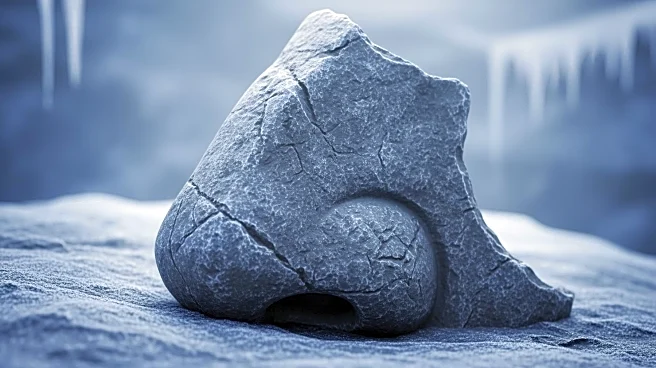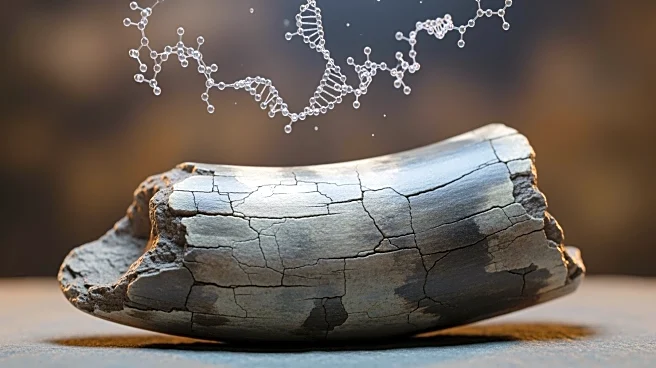What's Happening?
Researchers at Stockholm University have successfully extracted and analyzed RNA from a 39,000-year-old woolly mammoth, marking the oldest RNA ever recovered. Led by Emilio Mármol and Love Dalén, the team
isolated RNA strands from the muscle tissue of a juvenile mammoth named Yuka, preserved in Siberian permafrost. This discovery challenges previous assumptions about RNA's fragility and its ability to survive millennia. The RNA provides a snapshot of gene activity at the time of the mammoth's death, revealing which genes were active and offering insights into the creature's physiology. The study also uncovered non-coding RNAs, such as microRNAs, which regulate gene expression and play crucial roles in cellular functions.
Why It's Important?
This breakthrough expands the known limits of ancient biomolecular preservation, potentially opening new avenues for studying extinct species and ancient pathogens. By analyzing RNA, scientists can gain a deeper understanding of the biology and final moments of long-extinct creatures, offering a more comprehensive view than DNA alone. The ability to recover RNA from such ancient remains could lead to new insights into Ice Age pathogens and extinct species' cellular processes. This research demonstrates the potential for RNA molecules to survive longer than previously thought, which could revolutionize paleogenetics and our understanding of ancient life.
What's Next?
The research team plans to integrate RNA findings with existing DNA and protein data to build a fuller picture of extinct species' biology. This approach could reshape our understanding of megafauna by providing access to cellular processes frozen in time. The study's success may encourage further exploration of RNA recovery from other ancient remains, potentially leading to discoveries about extinct viruses and pathogens. Researchers hope to use this method to study other Ice Age creatures and expand the field of paleogenetics.











